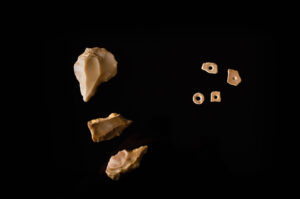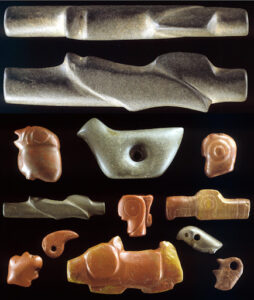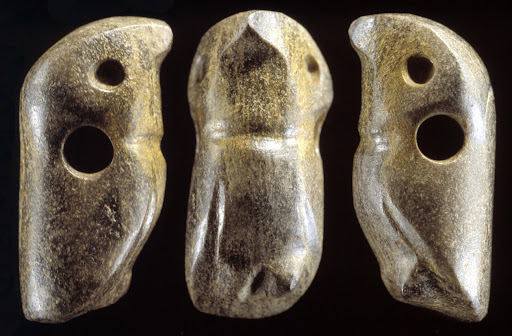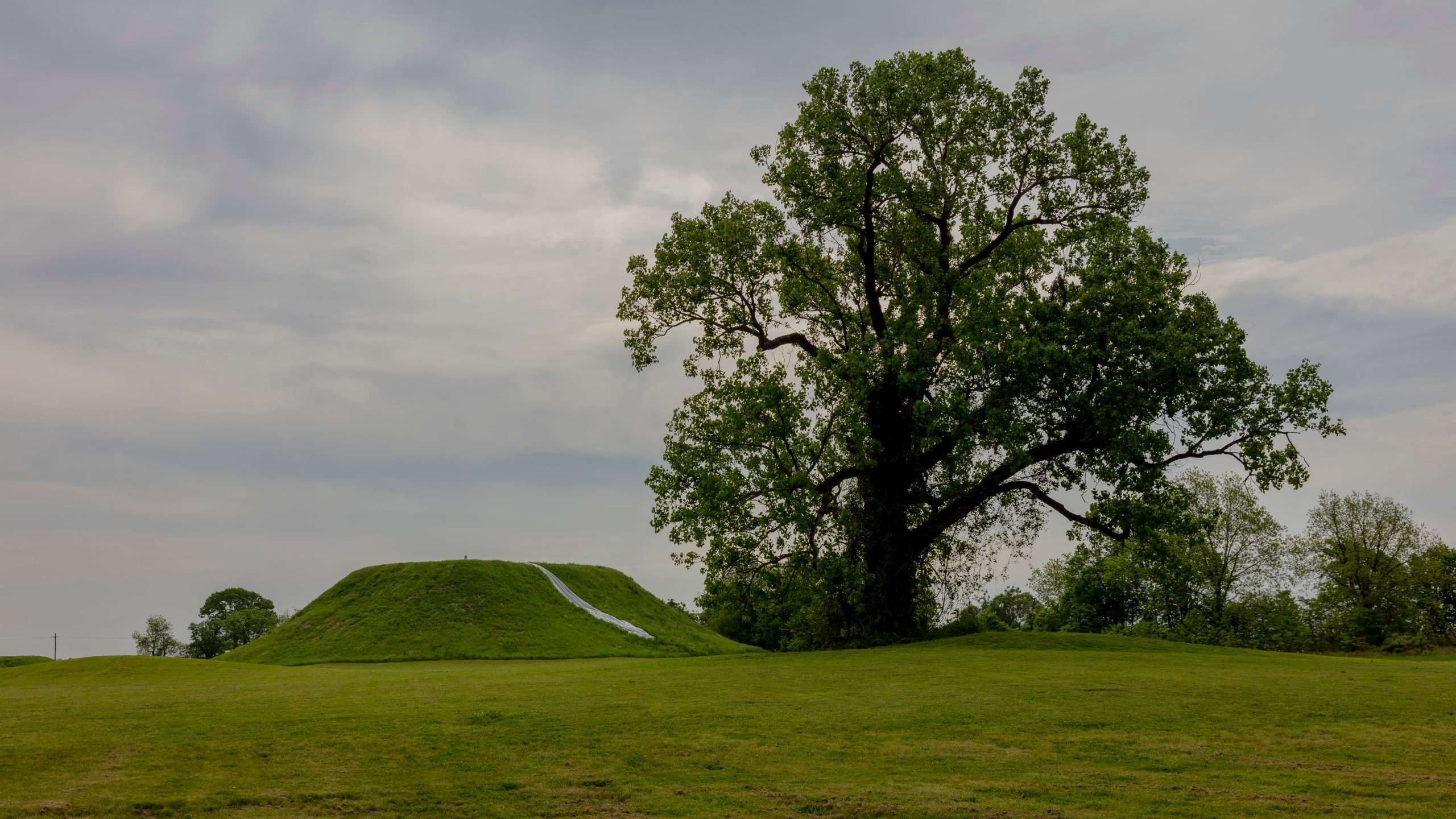What are Effigy Beads?

Effigy beads found in Mississippi offer a captivating glimpse into the rich cultural legacy of the region’s indigenous peoples. These small, intricately crafted objects, made from materials such as shell, stone, or clay, stand out from regular beads due to their unique shapes—often depicting animals, plants, or human figures. Each effigy bead represents a miniature work of art, meticulously carved or molded to capture the essence of its subject.
Archaeological excavations in Mississippi have uncovered numerous examples of these beads, particularly from sites associated with ancient Native American cultures like the Mississippian culture, which thrived from approximately 800 to 1600 AD. These cultures left behind a treasure trove of artifacts that provide insights into their daily lives, beliefs, and social structures.
Effigy beads were more than just decorative items; they held deep symbolic and spiritual significance. Likely used for adornment, worn as jewelry, or integrated into clothing and accessories, they also played roles in rituals and ceremonies. Scholars believe they may have served as talismans or amulets, imbued with spiritual power. The choice of subjects—whether animals, plants, or human forms—reflected religious beliefs, cosmological ideas, or social hierarchies within these ancient societies (MDAH). It is interesting to note that as of 2004, “more effigy beads have been found in Mississippi than any other state” (AR-31).
Effigy Beads at Poverty Point
The Poverty Point culture, centered in modern-day Louisiana, distinguished itself through the creation of intricately carved and polished miniature stone beads. Unlike other early American cultures that favored softer materials like shell or bone, Poverty Point artisans employed lapidary techniques using raw materials such as galena, hematite, sandstone, jasper, and slate, often sourced from nearby Mississippi and Alabama (Charles E. Moore Coll.). These materials were traded and crafted into exquisite artifacts, depicting various animals native to their environment and showcasing a deep cultural reverence for local wildlife.
This tradition of craftsmanship further solidifies Poverty Point’s role as a center of trade and cultural exchange. Alongside these stylized beads, Poverty Point also produced more conventional tubular beads. Remarkably, archaeological excavations at the Poverty Point site in Louisiana have uncovered the earliest known fired clay human figurines in North America, providing additional insights into ancient craftsmanship and symbolic expression within this thriving ancient culture (Poverty Point World Heritage Site).

The intricate nature of the beads crafted at Poverty Point suggests they were produced during a period of relative peace and stability. The meticulous craftsmanship required to create these beads, which would have taken hours to complete, indicates a society with the resources, time, and cultural focus to invest in such detailed artistry. Archaeologists and historians interpret this as evidence that Poverty Point flourished economically and socially during this era, as artisans were able to dedicate significant time and effort to the creation of these beads. This peaceful environment likely facilitated artistic and cultural expression, allowing the community to thrive and develop sophisticated forms of craftsmanship that reflected their prosperity and societal cohesion.
Studying effigy beads found in Mississippi enables archaeologists and historians to reconstruct the intricate tapestry of Indigenous life in the region. Analysis of their designs, materials, and distribution patterns offers insights into trade networks, artistic styles, and cultural exchanges among different Native American groups. These beads provide valuable clues not only about craftsmanship and aesthetics but also about the interconnectedness of ancient societies and their complex belief systems.
In summary, effigy beads found in Mississippi are more than archaeological artifacts; they serve as windows into the spiritual and cultural world of the people who created and used them. Each bead tells a story of craftsmanship, symbolism, and the vibrant traditions of Native American societies that flourished in this diverse and fertile landscape.
Citations:
Lithic Casting Lab. (n.d.). Gallery of ancient beads from the Americas. Retrieved June 12, 2024, from http://www.lithiccastinglab.com/gallery-pages/2001aprilbeads.htm
Poverty Point State Historic Site. (n.d.). History & Artifacts. Retrieved July 1, 2024, from https://www.povertypoint.us/history-artifacts-poverty-point
Mississippi History Now. (n.d.). Prehistoric Mississippi: Some New Perspectives. Retrieved July 1, 2024, from https://www.mshistorynow.mdah.ms.gov/issue/prehistoric-mississippi-some-new-perspectives
Read more about Poverty Point’s relationship with Mississippi here:
Echoes of the Mississippi: Poverty Point Culture in Mississippi



















